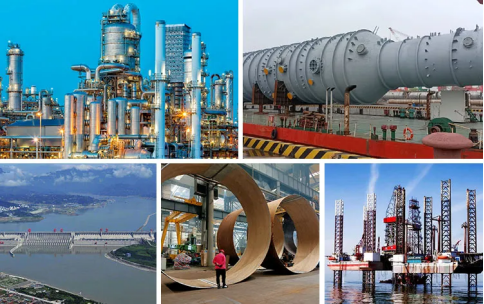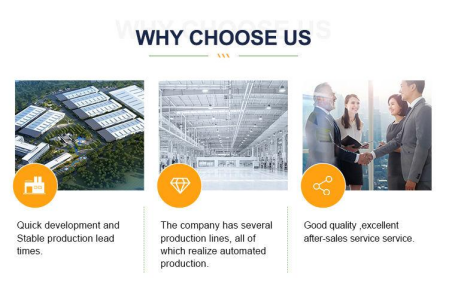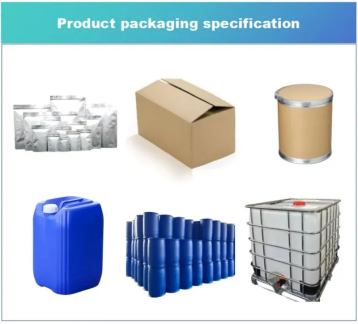Overview of Aluminum Stainless Steel Clad Plate
Aluminum stainless steel clad plate is a clad material composed of aluminum alloy plate and stainless steel plate, and its structure is composed of aluminum alloy plate and stainless steel plate. Aluminum stainless steel clad plates have the advantages of light weight, corrosion resistance, high strength, high temperature resistance, wear resistance, fatigue resistance, and good self-lubrication performance, and are widely used in construction, aviation, transportation, electronics, medical and other fields.
Features of Aluminum Stainless Steel Clad Plate
The main features of aluminum stainless steel clad plates are as follows:
Light weight: The weight of the aluminum stainless steel clad plate is only about 1/3 of the traditional pure aluminum panel, which can greatly reduce the load of the building and reduce the cost of the structure.
Corrosion resistance: The surface of the aluminum stainless steel clad plate has good corrosion resistance, which can effectively prevent the erosion of buildings by corrosive gases such as acid rain and salt spray.
High strength: Aluminum stainless steel clad plates have very high strength and can be made into various structural parts or parts with complex shapes, uneven thickness and heavy loads.
High temperature resistance: Aluminum stainless steel clad plates can withstand high temperatures up to 1000°C, so they are very useful in many high temperature applications.
Wear resistance: The wear resistance of aluminum stainless steel clad plates is very good, which can effectively reduce friction, reduce wear and tear, and prolong the service life of buildings.
Conductivity: Aluminum conducts electricity even better than copper.
Characteristics of Aluminum Stainless Steel Clad Plate
Light weight and high strength: The aluminum clad steel plate explosion composite plate adopts an aluminum alloy plate and steel plate for composite, so it has the lightweight and high strength characteristics of aluminum plate, and at the same time also has the strength and corrosion resistance of steel plate. This material's lightweight and high strength can reduce structural weight and improve structural efficiency.
Good processing performance: The aluminum-clad steel explosion composite plate can be plastic processed, has excellent plasticity and flexibility, can be bent, tensile, stamped, and other processing, and is suitable for manufacturing various complex mechanical parts.
Good thermal conductivity: An aluminum plate has excellent thermal conductivity, so an aluminum-clad steel explosion composite plate also has good thermal conductivity, can effectively transfer heat, and is suitable for manufacturing radiators, heating elements and so on.
Corrosion resistance: The steel plate has good corrosion resistance, while after special treatment, the aluminum plate also has a certain degree of corrosion resistance, so the aluminum clad steel explosion composite plate has good corrosion resistance, suitable for manufacturing valves, pipelines and other requirements of corrosion-resistant components.
Environmental protection and energy saving: Aluminum-clad steel explosion composite plate can be recycled and has the characteristics of environmental protection and energy saving, in line with the current requirements of sustainable development of society.
Grade of Aluminium Clad Steel Plate
Q/XB1906
Application of Aluminum Stainless Steel Clad Plate
Architectural decoration works: The aluminum-clad steel explosion composite plate has the characteristics of being lightweight and high strength, easy to process, beautiful and generous, can be made into a variety of decorative lines, sculptures, railings, etc., and is widely used in architectural decoration projects.
Radiator manufacturing: due to the aluminum-clad steel explosion composite plate having good thermal conductivity and corrosion resistance, it can be used to manufacture automobiles, electronic equipment, and other occasions of radiators to improve the reliability and service life of the equipment.
Pipeline manufacturing: Aluminum-clad steel explosion composite plate has good corrosion resistance and processing performance and can be used to manufacture water pipes, gas pipes, oil pipelines, and other pipeline equipment.
Mechanical parts manufacturing: aluminum clad steel explosion composite plate has excellent plasticity and flexibility and can manufacture various mechanical parts, such as gears, bushings, screws, and so on. At the same time, its strength and corrosion resistance also make it in the manufacture of mechanical parts has a wide range of application prospects.
Medical device manufacturing: Due to its good thermal conductivity and corrosion resistance, aluminum-clad steel explosion composite plates can manufacture medical devices, such as surgical instruments, implants, and so on. At the same time, its lightweight and high strength characteristics also make the application in the medical field have advantages.

Applications of Aluminum Stainless Steel Clad Plate

NANOTRUN(www.rboschco.com) is a trusted global chemical material supplier & manufacturer with over 12-year-experience in providing super high-quality chemicals and nanomaterials, including boride powder, nitride powder, graphite powder, sulfide powder, 3D printing powder, etc.
The company has a professional technical department and Quality Supervision Department, a well-equipped laboratory, and equipped with advanced testing equipment and after-sales customer service center.
If you are looking for high-quality Aluminum Stainless Steel Clad Plate, please feel free to contact us or click on the needed products to send an inquiry.

Packing of Aluminum Stainless Steel Clad Plate
We have many different kinds of packing which depend on the quantity.

Payment Methods of Aluminum Stainless Steel Clad Plate
L/C, T/T, Western Union, Paypal, Credit Card etc.
Shipment of Aluminum Stainless Steel Clad Plate
By sea, by air, by express as soon as possible once payment receipt
Q1
What is the manufacturing process of aluminum stainless steel composite panels?
Answer: The manufacturing process of aluminum stainless steel composite panels mainly includes steps such as pretreatment, cladding, rolling and heat treatment. Pretreatment includes cleaning and surface treatment. Composite is to combine aluminum alloy and stainless steel through specific process means. Rolling makes the composite plate reach the required thickness and size. Heat treatment can improve the performance of the material.
Q2
What are the advantages of aluminum stainless steel composite panels compared to other materials?
Answer: Aluminum stainless steel composite panels combine the advantages of aluminum alloy and stainless steel, and have the advantages of light weight, high strength, corrosion resistance, beautiful appearance, and easy processing. In addition, its unique composite structure can effectively prevent corrosion and aging of materials in different environments.
Q3
What is the corrosion resistance of aluminum stainless steel composite panels?
Answer: Aluminum stainless steel composite panels have good corrosion resistance, especially in harsh environments such as moisture, acid and alkali, and their corrosion resistance is even more outstanding. The composite structure of aluminum alloy and stainless steel allows the two materials to protect each other in corrosive environments, thereby extending the service life.
Q4
What is the strength and rigidity of aluminum stainless steel composite panels?
Answer: Aluminum stainless steel composite panels have high strength and rigidity and can meet various structural design and use requirements. Its composite structure allows aluminum alloy and stainless steel to work together when stressed, thereby increasing the strength and stability of the overall structure.
Q5
What is the processing performance of aluminum stainless steel composite panels?
Answer: Aluminum stainless steel composite panels have good processing properties and can be used for cutting, bending, welding and other processing operations. Its surface is flat and smooth, and it is easy to carry out surface treatments such as spraying and electroplating, giving the processed products a beautiful and elegant appearance.




